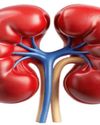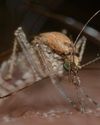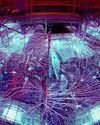Try GOLD - Free
Algal blooms a threat to wetland bird sanctuaries of India needs attention
Scientific India
|November - December 2023
Birds are often referred to as a barometer for the health of our planet.

They are ecosystem engineers seed dispersers, pollinators and scavengers. Research shows that biodiversity loss is one of the most significant environmental challenges facing the earth today. The evolution of waterbirds is often mainly centred on adaptations to improve feeding techniques. This includes legs adapted to diving or wading, and the webbing between the toes. Many of these adaptations are shared between different types of waterbirds. For example, flamingos and ducks share a similar filter-feeding lifestyle. Water birds are a large and varied group of birds. Most are exclusive to freshwater sources such as rivers, lakes, dams and wetlands.
However, many sea and shore birds can also regularly be found in freshwater, e.g., cormorants and migratory waders. Water birds include ducks, geese and swans (Order Anseriformes); grebes (Order Podicipediformes); pelicans, darters and many cormorants (Order Pelecaniformes); herons, ibises, spoonbills and storks (Order Ciconiiformes); cranes, rails, moorhens and coots (Order Gruiformes); and several waders (Order Charadriiformes) The term aquatic bird is sometimes also used in this context. A related term that has a narrower meaning is waterfowl. Some piscivorous birds of prey, such as ospreys and sea eagles, hunt aquatic prey but do not stay in water for long, live predominantly over dry land, and are not considered water birds. The term waterbird is also used in conservation to refer to any birds that inhabit or depend on bodies of water or wetland areas.
This story is from the November - December 2023 edition of Scientific India.
Subscribe to Magzter GOLD to access thousands of curated premium stories, and 10,000+ magazines and newspapers.
Already a subscriber? Sign In
MORE STORIES FROM Scientific India
Scientific India
Japanese physicists were the first to measure the most tolerant entanglement state, the W state
There are many unusual things that happen in the world of quantum physics.
3 mins
September - October 2025

Scientific India
The Fifth Force: Could It Unlock the Secret of Dark Matter?
What if the universe is powered by a force we've never seen before? For centuries, science has explained nature with four fundamental forces.
3 mins
September - October 2025

Scientific India
A flu test you can chew
As flu season nears in the northern hemisphere, scientists are exploring a surprising new way to detect infection: through taste.
1 mins
September - October 2025

Scientific India
Lab-Grown Kidney Brings Artificial Organ Dream Closer to Reality
In a major leap toward bioengineered organ replacement, scientists have successfully grown human kidney 'assembloids' in the laboratory that mimic key structural and functional features of natural kidneys.
1 min
September - October 2025

Scientific India
Your pumpkin might be hiding a toxic secret
Pumpkins, squash, zucchini, and other members of the gourd family have a surprising trait: they can take up pollutants from the soil and store them in their edible parts.
1 mins
September - October 2025

Scientific India
2025 Nobel Prize in Physics Reveals Quantum Secrets in Superconducting Circuits
The 2025 Nobel Prize in Physics has been awarded to John Clarke, Michel H. Devoret, and John M. Martinis for their pioneering experiments that brought quantum mechanics from the invisible atomic world to the macroscopic scale a system large enough to hold in your hand.
1 mins
September - October 2025

Scientific India
Genomic Evidence Redefines the Evolutionary Age of Mosquitoes
A new genetic analysis has shaken up what we thought we knew about one of humanity's most notorious pests the mosquito.
1 min
September - October 2025

Scientific India
Nobel Prize in Chemistry 2025: Building Molecular Architectures with Room to Breathe
In a scientific breakthrough that bridges molecular design with planetary-scale problems, the 2025 Nobel Prize in Chemistry has been awarded to Susumu Kitagawa, Richard Robson, and Omar Yaghi.
1 mins
September - October 2025

Scientific India
Guardians of Immunity: Nobel Prize 2025 Honors Discoveries that Keep the Immune System in Check
The 2025 Nobel Prize in Physiology or Medicine has been awarded to Mary E. Brunkow, Fred Ramsdell, and Shimon Sakaguchi for their groundbreaking discoveries in the field of peripheral immune tolerance a crucial mechanism that prevents the body's immune system from turning against itself.
1 mins
September - October 2025

Scientific India
'Is cold nuclear fusion feasible?
In early May 1989, two chemists from the University of Utah, Pons and Fleischmann, arrived in Washington, U.S.A. The aim is to present their findings to members of the US Congress.
3 mins
September - October 2025
Translate
Change font size
